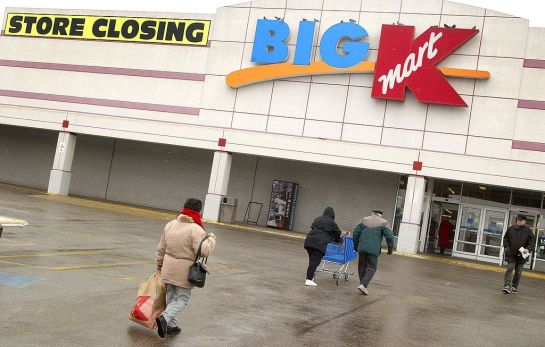What Can The Bike Industry Learn from K-Mart and Sears?
By Tom Demerly for tomdemerly.com
In a brutal week for traditional big-box U.S retailers, Sears Holding announced the closure of 108 Kmart and 42 Sears locations in 40 states. Overall 150 large department stores are being closed by the formerly popular department store brand. Additionally, department store giant Macy’s announced the closure of 68 stores across the U.S.
As with any large shift in business there is likely no single reason for the closures. They are the result of a complex amalgam of factors that have aligned to degrade the appeal of big department stores to retail customers.
What can the bicycle retail industry learn from the big-box closures?
If you insist on a singular narrative to the “big-box bust” it is failure to adapt.
Big box retail stores are essentially a time capsule of retail since the post World War II consumer boom era. They have not changed significantly since then. Items are stocked by category in displays on a large sales floor. Displays highlight featured products. Shoppers can see, feel and touch items before they buy them. And while this seems like a logical way to present and sell consumer goods it fails to acknowledge a simple theme: Most other factors in retail consumption have changed.
When Sears, JC Penney and Macy’s were founded Costco, Sam’s Club, online shopping, smart phones, Amazon.com “One-Click” and e-Bay did not exist. These new alternatives to traditional retail have exerted a kind of slow, painful “death by a thousand cuts” on traditional department store retail. Add the “reset” affect of the U.S. recession and structural changes in age demographics and you have a brutal conspiracy of factors working against traditional retail.
Retail has become increasingly polarized, with consumers gravitating toward either end of the retail spectrum. They buy from massive online and warehouse stores for commodity items like appliances, most daily apparel and food staples. They buy from small well-branded niche retailers for discretionary purchases like fashion apparel, luxury goods, specialty recreational equipment and items that help define their lifestyle.
The lesson for the bike industry is simple; sell, stock, display and market differently than old school department stores. Look at what they have done, and do the opposite.
Here are a few specifics for bike retailers: Avoid excessive program buying that makes any one brand dominant in your store making it feel like a generic “brand store”.
Bike brand takeover of independent bike dealers has been an emerging trend because of attractive pricing incentives for dealers, financing of inventory and the marketing strength that the big brands offer the small shops. These things sound great to a small specialty retailer. Bike brands have sold small independent dealers on the idea of “competing with the big boxes” by aligning with a big bike brand for marketing, financing inventory and even point of sale systems. The problem with that logic is that small specialty retailers don’t need to, and cannot, compete with the big box retailers. Instead, they need to create and maintain an entirely new identity unto themselves. They need to create their own niche, and that takes original thinking and acceptance of risk.
If there is a singular lesson it is: If the big box retailers are doing something, then the small independent bike shops should invent another approach. Small specialty bike shops should capitalize on their small size by remaining nimble with inventory, rapidly adaptive to trends and constantly changing their merchandising to reflect their position at the leading edge of the sport. They also need to be honest about the structural elements of their business. Are they located in an area where cyclists live, ride and shop? Does the local population use specialty retailers? Are they near other niche-category specialty retailers?
Finally, the small specialty bike shop needs to exploit the great equalizer of modern commerce, the Internet. This doesn’t necessarily mean having a shopping cart experience online, but it does mean presenting products that are unique and branding themselves by communicating a unique voice that reinforces expertise, candor and authority.
It’s possible for the small bicycle retailer to succeed, and some continue to, but the rules have changed and continue to change quickly enough that doing the same old thing will earn a retailer the same destiny as once-great retail giants Sears, Macy’s and JC Penney.
